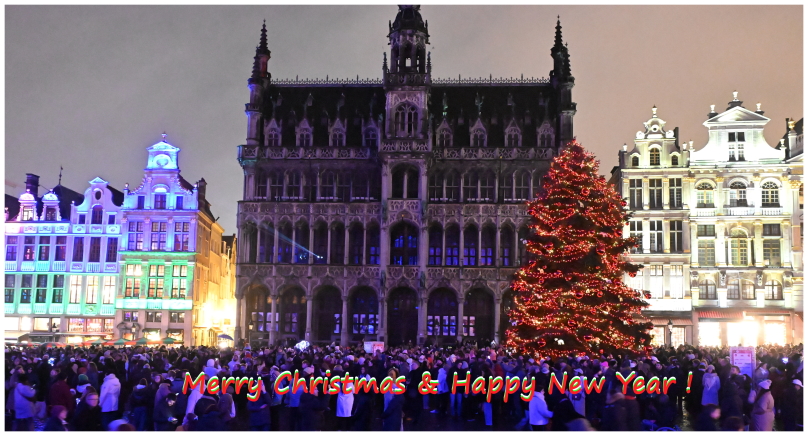The Meetjesland in the north of East-Flanders, Belgium

Assenede
 
|
Uit een landkaart van 1973
This is the place where we found the first roots of our Noë ancestors. Assenede is one of those villages in the North of Flanders, where not so long ago there was only the sea.
Over the centuries it has suffered from inundations even more than Zelzate: 1288, 1313, 1321, 1375, 1377 and the infamous St.Elisabeth Flood in 1404.
The year 1488 was also definitely not a good year for Assenede. In January of that year Kortrijk (Courtrai) was taken and occupied by Ghent. Maximilian's move in response to this was to try and take Bruges. In this not only did he fail abysmally but he was even taken prisoner and he was forced to spend a three month vacation in a Bruges jail. When he was set free he took his revenge on Ghent with all the dire consequences for Assenede and its surroundings.
 |
Assenede's town hall on that beautiful Summer afternoon of 4 Spetember 2004 |
But in 1488 there was also the plague, there were the sackings and retaliation by the occupation forces, all of which contributed to the downfall of Assenede. Then in the Summer of 1488 the lock to the west of Assenede collapsed, the entire northern part of Assenede was inundated and 5 parishes disappeared forever. To add insult to injury the armies of Maximilian of Austria and France were here and up against each other and for 4 years the town was engulfed (pun not intended) in war. The dams were not repaired and vast regions disappeared in an inland sea called the Braakman.
To round things off there was an end of the year storm in December 1488 and most of what little had been accomplished to repair the damage of earlier that year was thrown in an even worse confusion than before.
Assenede has had no less than 5 ports. The last port of Assenede was closed in 1504 and this was done for the same reason as in Bruges, Damme and Sluis: silt.
In 1568 the "Geuzen" (Beggars), a derogatory name for the Protestants, sacked Assenede and burned its church to the ground.
Witches were burnt here in our Meetjesland as well. Prof. J. Monballyu of the Catholic University of Leuven found out about Catherine Curse who was burnt as a witch in Assenede in 1598 or 1599. In 1624 in Nevele one Pieryne Danneels died during her trial. Cause of death ? The food or lack of TLC (tender loving care) ? Who knows ?
In the early 17th Century a dike was built and thus a new polder was created which they called the Smallegelanderpolder ("smal", "smalle" means narrow and "gelander" means fields). Later on more dikes were built and with them came new fertile land taken from the sea and greater security further inland.
 Walking and bicycling up and down these old dikes and around the old creeks is
still a very agreeable exercice especially when the weather is nice.
Walking and bicycling up and down these old dikes and around the old creeks is
still a very agreeable exercice especially when the weather is nice.
The Graafjansdijk (Duke John's Dike) cuts Assenede in half: south of it is the center of Assenede and the Houtland (Wood Land) which is sandier while the dark soil of the polders to the north of the dike is more clayish and more fertile.
In the 17th Century Assenede was ravaged at irregular intervals by bands of foreign soldiers who looted and burned or were just simply quartered with the local inhabitants. The attack in 1600 by Maurits Van Nassau left the vicarage in ruins while between 1625 and 1630 Assenede and especially the St Albertspolder were full of refugees from the surrounding villages. In 1636 even the vicar of Assenede was kidnapped and he wasn't returned till 1639. Up to 3 times the Dutch tried to take Sas van Ghent while they were entrenched for years at Assenede.
Reconstruction of the town could only be thought of after the Treaty of Munster in 1648. But at the end of the 17th Century under the reign of Louis XIV ("le Roi Soleil") foreign armies were once again quartered here.
 Assenede was the capital of the
Assenede Corporation. It was part of the 4 Corporations together with
Boekhoute,
Axel and Hulst. Assenede itself,
Ertvelde,
Kluizen,
Zelzate,
Wachtebeke,
St.-Kruis-Winkel and a few villages which were
overwhelmed and disappeared into the sea in the 15th and 16th
Century all came under the jurisdiction of the Assenede Corporation. Until
1776 Zelzate was administratively an integral part of
Assenede. That is good enough a reason, as far as we are concerned, for
considering it forever an inalienable part of our Meetjesland.
Assenede was the capital of the
Assenede Corporation. It was part of the 4 Corporations together with
Boekhoute,
Axel and Hulst. Assenede itself,
Ertvelde,
Kluizen,
Zelzate,
Wachtebeke,
St.-Kruis-Winkel and a few villages which were
overwhelmed and disappeared into the sea in the 15th and 16th
Century all came under the jurisdiction of the Assenede Corporation. Until
1776 Zelzate was administratively an integral part of
Assenede. That is good enough a reason, as far as we are concerned, for
considering it forever an inalienable part of our Meetjesland.
Until the early 1960s Assenede had a great brewery "De Bijenkorf" (The Bee Hive), also called Brouwerij Cruyl. It had been there since at least 1769. Here you can read an article (in Dutch) about one of its last master brewers Leon Neetesonne.
The source of most of the above is the excellent "Streekgids Meetjesland", 1998. See also: Our Sources.
 |
Café Cambrinus 30/12/2010 |
 |
 |
Carnaval in Assenede 13/3/2011 |

More pictures
Our Meetjesland
— Table of Contents
— Find something in this Meetjesland website

MijnPlatteLand.com
Most recent update : 22-04-2021
Copyright Notice (c) 2026
